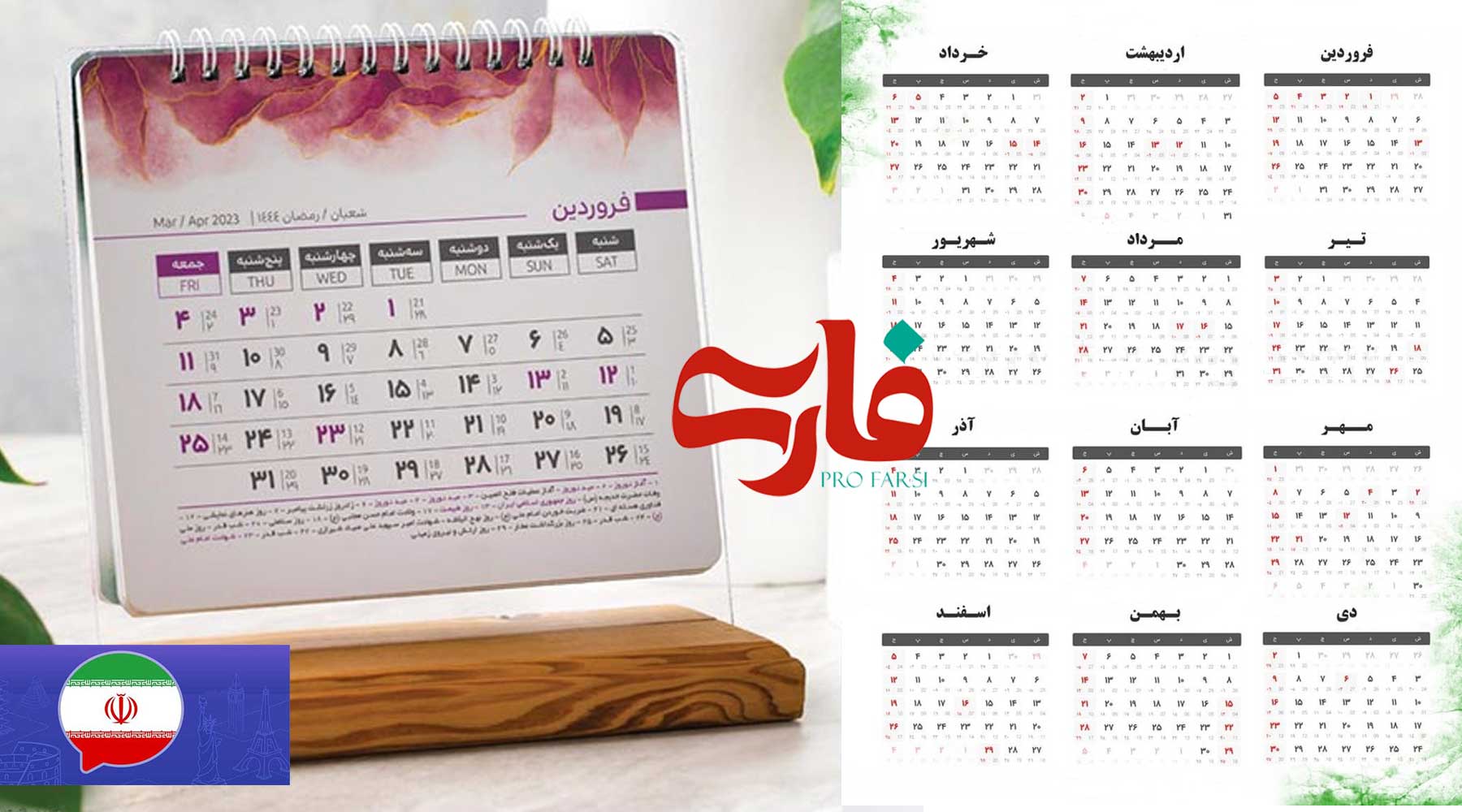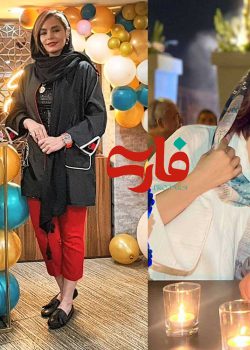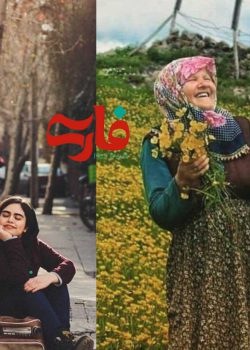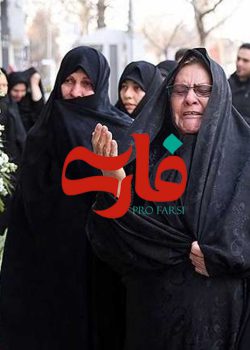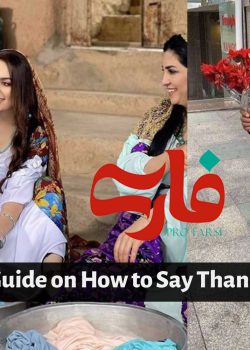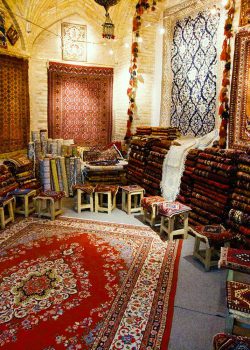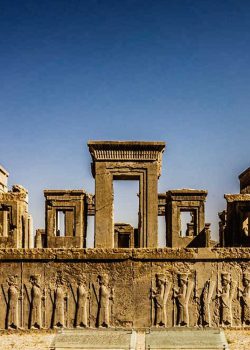- Days Of The Week And Months In Farsi
- What Are the Benefits of Persian Calendar?
- What Is the Difference Between the Solar Hijri Calendar and the Lunar Calendar?
- Persian days of the week
- Interesting Facts About Persian Weekday
- Days Of The Week And Months In Farsi
- Persian months and their equivalences in the Gregorian calendar
Days Of The Week And Months In Farsi
The Persian calendar, also known as the Solar Hijri calendar, is a calendar system with a long and fascinating history. It is primarily used in Iran and other Persian-speaking regions as a means of organizing time and determining religious and cultural observances. The Persian calendar is a solar calendar, meaning it is based on the Earth’s orbit around the Sun. It comprises 12 months of varying lengths, with an extra day added every four years to account for leap years. The calendar is deeply rooted in ancient Zoroastrian traditions and has evolved over centuries, influenced by astronomical observations and cultural practices. It holds significant cultural and religious importance, marking the start of the year with the vernal equinox and guiding the timing of festivals, holidays, and other important events. Understanding the Persian calendar provides insight into the cultural fabric and temporal rhythms of the Persian-speaking world.
Here are some key features of the Persian calendar:
- Solar-based: The Persian calendar is based on the solar year, specifically the tropical year, which is the time it takes for the Earth to complete one orbit around the Sun. It consists of 365 days, with an additional day added every four years (similar to a leap year).
- Zoroastrian Influence: The Persian calendar has roots in ancient Zoroastrian traditions and dates back to the reign of the Achaemenid Empire. Zoroastrian priests played a significant role in developing and maintaining the calendar system.
- Months and Seasons: The Persian calendar consists of 12 months, each with varying lengths. The months follow a pattern of alternating between 31 and 30 days, except for the last month, which can have 29 or 30 days. The calendar also marks the beginning of the year with the vernal equinox, typically around March 20th, coinciding with the start of the month of Farvardin.
- Hijri Era: The Persian calendar uses the Hijri era as its starting point, which corresponds to the migration of the Prophet Muhammad from Mecca to Medina in 622 CE. Therefore, the current year in the Persian calendar is usually calculated by adding 622 to the corresponding year in the Gregorian calendar.
What Are the Benefits of Persian Calendar?
The Solar Hijri calendar, offers several benefits and serves various purposes in the Persian-speaking world. Here are some of the benefits of the Persian calendar:
- Cultural Significance: The Persian calendar holds deep cultural significance and acts as a symbol of identity for Persian-speaking communities. It reflects the rich heritage and historical traditions of the region, connecting people to their past and cultural roots.
- Religious Observances: The Persian calendar plays a crucial role in determining the dates of religious observances in the Persian-speaking world, particularly for Muslims who follow the lunar calendar alongside the solar-based Persian calendar. It helps determine important Islamic events, such as Ramadan, Eid al-Fitr, and Eid al-Adha.
- Festivals and Holidays: The Persian calendar guides the timing of festivals and holidays celebrated in Iran and other Persian-speaking regions. It ensures that cultural events, such as Nowruz (Persian New Year), Mehregan, and Sizdah Be-dar, are observed at the appropriate times based on astronomical calculations.
- Seasonal Alignment: The Persian calendar aligns closely with the seasons, particularly the vernal equinox, which marks the beginning of the year. This allows for better synchronization of agricultural activities, as well as cultural and traditional practices associated with specific seasons.
- Official Usage: The Persian calendar is used for official purposes in Iran, including administrative and governmental functions. It is used in official documents, legal proceedings, and public announcements, providing a standardized framework for chronological references.
- Cultural Awareness: Understanding the Persian calendar enables individuals to engage more deeply with Persian culture, literature, and history. It facilitates communication, comprehension, and participation in cultural events, enhancing cross-cultural understanding and fostering appreciation for Persian traditions.
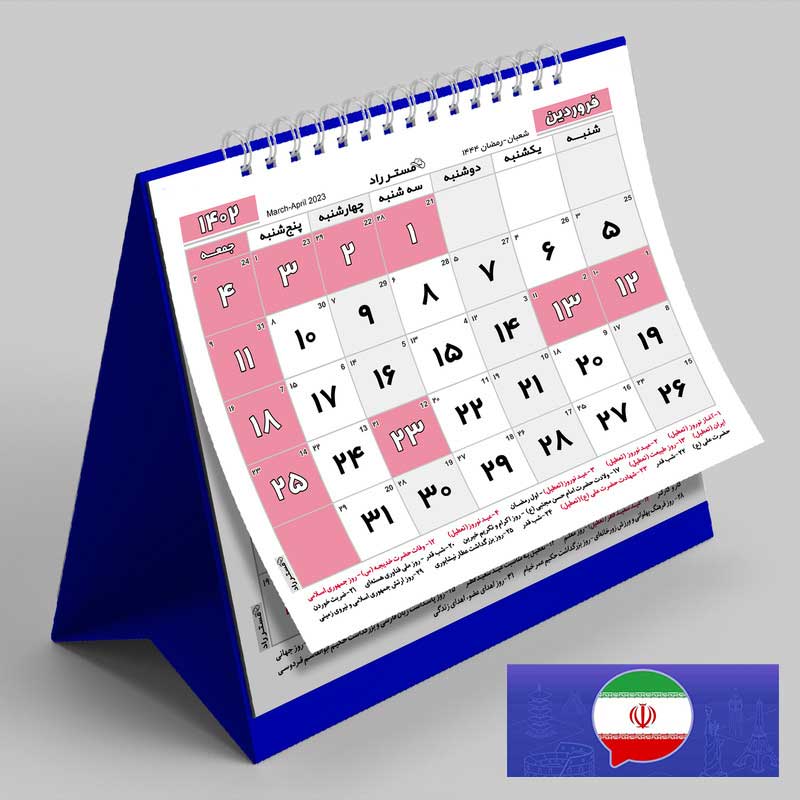
What Is the Difference Between the Solar Hijri Calendar and the Lunar Calendar?
The Solar Hijri calendar and the Lunar calendar are two distinct calendar systems with fundamental differences based on their methods of timekeeping:
- Basis of Calculation:
The Solar Hijri calendar is a solar calendar, meaning it is based on the Earth’s orbit around the Sun. It calculates time primarily using astronomical observations of the Sun’s position, specifically the vernal equinox as the start of the year. The calendar consists of 365 days in a regular year and adds an extra day every four years to account for leap years.
The Lunar calendar is based on the cycles of the Moon. It follows the lunar month, which is approximately 29.5 days long. A lunar year typically consists of 12 lunar months, totaling about 354 to 355 days. As a result, the lunar calendar is shorter than the solar calendar.
- Alignment with Natural Phenomena:
The Solar Hijri calendar aligns closely with the seasons as it is based on the Earth’s orbit around the Sun. The start of the year, marked by the vernal equinox, ensures that the calendar year coincides with the natural cycle of seasons.
The Lunar calendar does not align directly with the seasons, as its calculations are based on the Moon’s phases. This means that lunar months can shift throughout the solar year, resulting in a variation between the lunar and solar calendars.
Cultural and Religious Usage:
The Solar Hijri calendar is widely used in Iran and other Persian-speaking regions. It holds cultural and religious significance and is used for determining the dates of Persian New Year (Nowruz) and other important cultural and religious observances.
The Lunar calendar is followed by many Muslim-majority countries for determining the timing of Islamic holidays, such as Ramadan, Eid al-Fitr, and Eid al-Adha. It is also used for religious observations and determining the dates of Islamic events based on the sighting of the Moon.
So the Solar Hijri calendar is a solar-based calendar primarily used in Iran, while the Lunar calendar follows the cycles of the Moon and is commonly used for Islamic religious purposes. The key difference lies in their methods of timekeeping and their respective alignments with the Earth’s orbit and the Moon’s phases.
What Is the Difference Between the Persian Calendar and the Gregorian Calendar?
The Persian calendar and the Gregorian calendar are two distinct calendar systems widely used in different parts of the world. Here are the main differences between them:
Basis of Calculation:
- Persian Calendar: The Persian calendar, also known as the Solar Hijri calendar, is a solar calendar based on astronomical observations. It calculates time primarily using the Earth’s orbit around the Sun, with the vernal equinox as the starting point for the year. The calendar consists of 365 days in a regular year, with an additional day added every four years to account for leap years.
- Gregorian Calendar: The Gregorian calendar is a solar calendar primarily used in Western countries. It is based on the length of the Earth’s orbit around the Sun and was introduced by Pope Gregory XIII in 1582. The Gregorian calendar also consists of 365 days in a regular year, but it adds an extra day (February 29th) every four years, except for years divisible by 100 but not by 400.
Origin and Cultural Usage:
- Persian Calendar: The Persian calendar has its roots in ancient Zoroastrian traditions and has been used for centuries in Iran and other Persian-speaking regions. It holds significant cultural and religious importance, marking the start of the year with the vernal equinox and guiding the timing of festivals, holidays, and other important events in Persian culture.
- Gregorian Calendar: The Gregorian calendar is widely used in Western countries and has become the international standard for civil use. It is used for various purposes, including official documentation, international business transactions, and everyday life in many parts of the world.
Leap Year Calculation:
- Persian Calendar: The Persian calendar adds an extra day, known as “Rooz-e Kabiseh” or leap day, to the last month of the year (Esfand) every four years to align with the solar year. This accounts for the slightly longer tropical year compared to the calendar year.
- Gregorian Calendar: The Gregorian calendar also incorporates a leap year system. Leap years occur every four years, with an extra day added to February. However, years divisible by 100 but not by 400 are not considered leap years, making an exception to the four-year rule.
Regional Usage:
- Persian Calendar: The Persian calendar is predominantly used in Iran, Afghanistan, and Tajikistan, as well as among Persian-speaking communities around the world.
- Gregorian Calendar: The Gregorian calendar is used as the standard calendar in most countries worldwide, including the United States, Canada, the United Kingdom, and many European nations.
Persian days of the week
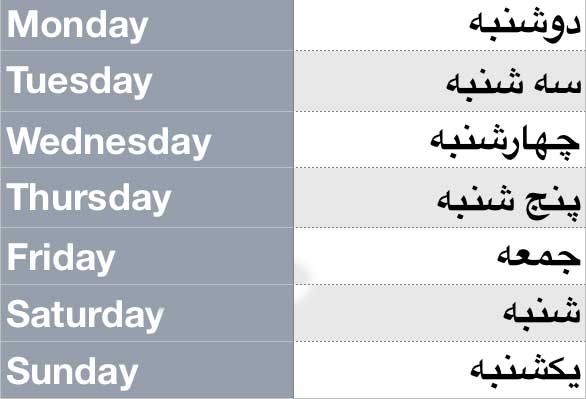
- Shanbeh (شنبه) – Sunday
- Yekshanbeh (یکشنبه) – Monday
- Doshanbeh (دوشنبه) – Tuesday
- Seshanbeh (سهشنبه) – Wednesday
- Chaharshanbeh (چهارشنبه) – Thursday
- Panjshanbeh (پنجشنبه) – Friday
- Jomeh (جمعه) – Saturday
Interesting Facts About Persian Weekday
The Persian names for the weekdays are derived from celestial objects or deities associated with them in ancient Persian mythology and astrology.
For example,
Shanbeh (Sunday) is named after “Shams,” meaning the Sun, while Doshanbeh (Tuesday) is associated with “Doshanbe,” meaning the planet Mars.
Friday (Jomeh) is considered the holiest and most significant day of the week. It is a day of congregational prayers and rest, similar to the concept of Sunday in many Western cultures.
Each day of the Persian week holds certain symbolic meanings and cultural practices. For example, Chaharshanbeh (Thursday) is associated with a festival called “Chaharshanbe Suri,” where people jump over bonfires as a purification ritual on the eve of the last Wednesday of the year.
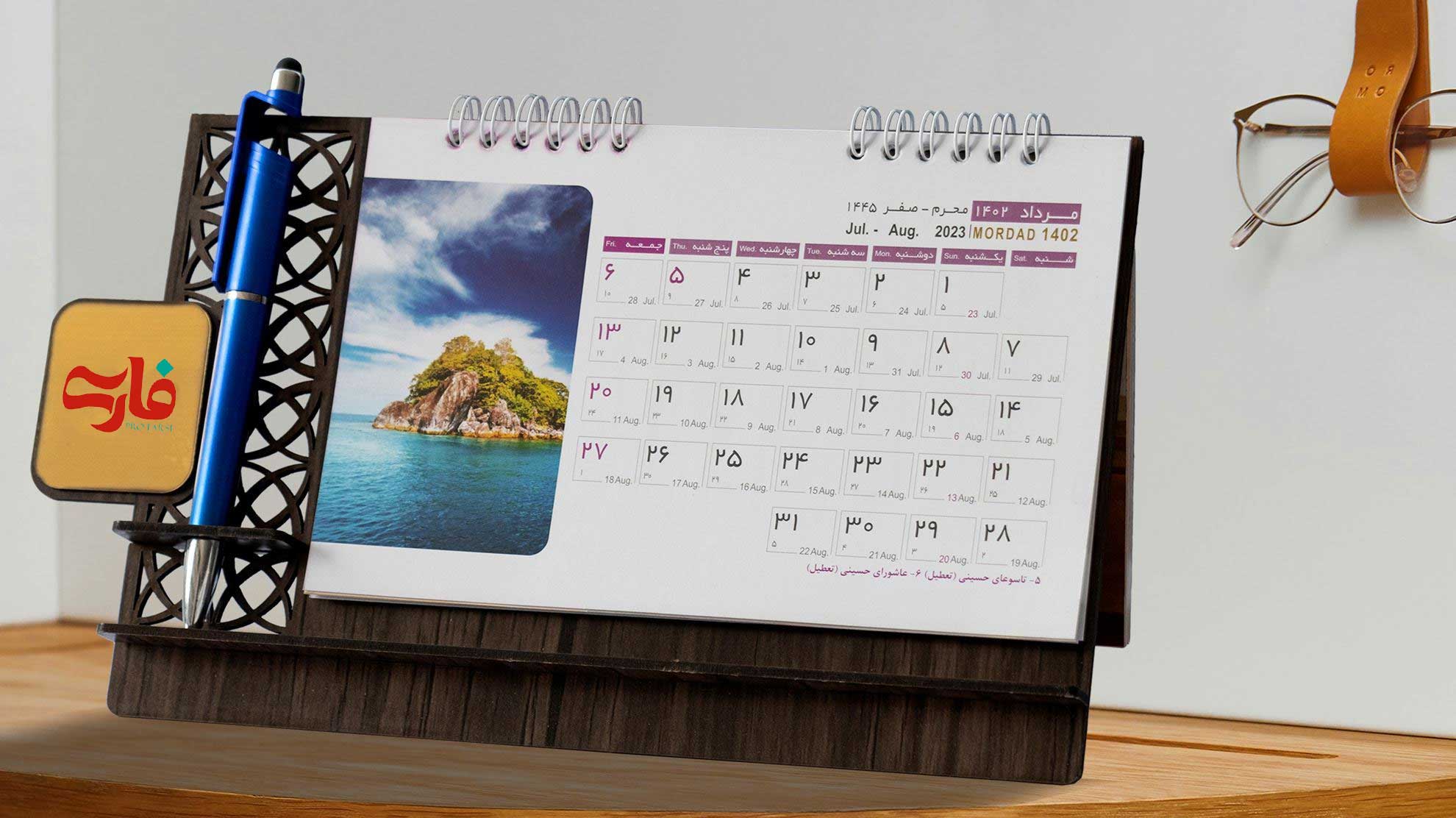
Days Of The Week And Months In Farsi
The Persian calendar consists of 12 months, with each month having a specific number of days. The months and their corresponding seasons in Persian are as follows:
- Farvardin (فروردین) – Spring: Farvardin marks the beginning of the Persian New Year, Nowruz, and is associated with the arrival of spring.
- Ordibehesht (اردیبهشت) – Spring: Ordibehesht continues the spring season, with nature flourishing and temperatures becoming warmer.
- Khordad (خرداد) – Spring: Khordad represents the peak of spring, with blossoming flowers and trees.
- Tir (تیر) – Summer: Tir signifies the beginning of summer, with longer days and hotter temperatures.
- Mordad (مرداد) – Summer: Mordad continues the summer season, characterized by high temperatures and dry weather.
- Shahrivar (شهریور) – Summer: Shahrivar is still part of the summer season, but temperatures begin to gradually cool down.
- Mehr (مهر) – Autumn: Mehr marks the beginning of autumn, with mild temperatures and the changing colors of leaves.
- Aban (آبان) – Autumn: Aban continues the autumn season, often accompanied by rain showers.
- Azar (آذر) – Autumn: Azar represents late autumn, with cooler temperatures and occasional frost.
- Dey (دی) – Winter: Dey is the start of the winter season, characterized by colder weather and shorter days.
- Bahman (بهمن) – Winter: Bahman continues the winter season, often with heavy snowfall in some regions.
- Esfand (اسفند) – Winter: Esfand is the last month of the Persian calendar and concludes the winter season.
Persian months and their equivalences in the Gregorian calendar
Here are the Persian months and their corresponding equivalences in the Gregorian calendar for the current Iranian year (1400/1401 AH):
Farvardin (فروردین) – March 21 to April 20
Ordibehesht (اردیبهشت) – April 21 to May 20
Khordad (خرداد) – May 21 to June 20
Tir (تیر) – June 21 to July 21
Mordad (مرداد) – July 22 to August 21
Shahrivar (شهریور) – August 22 to September 21
Mehr (مهر) – September 22 to October 22
Aban (آبان) – October 23 to November 21
Azar (آذر) – November 22 to December 21
Dey (دی) – December 22 to January 20
Bahman (بهمن) – January 21 to February 19
Esfand (اسفند) – February 20 to March 20
Related Posts

